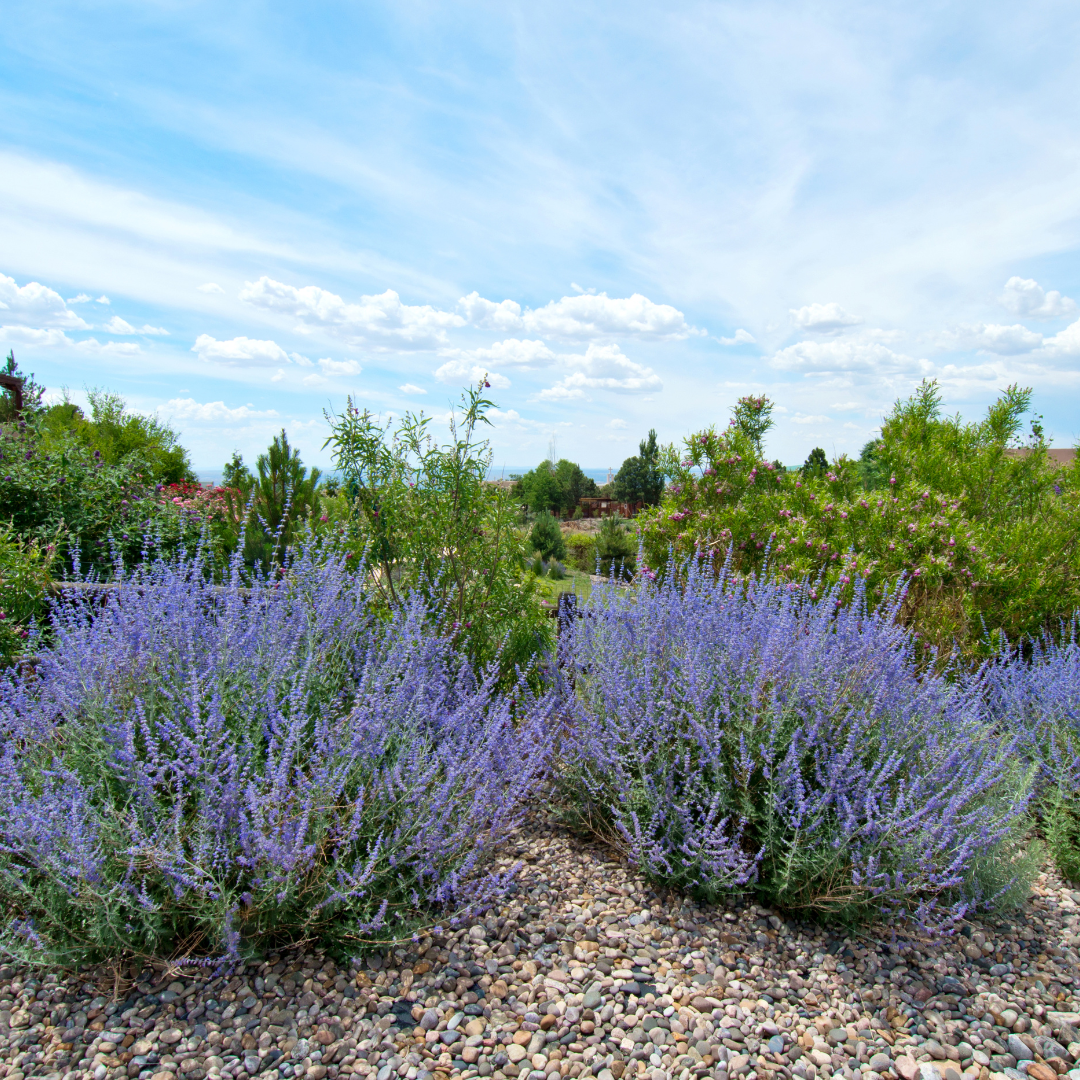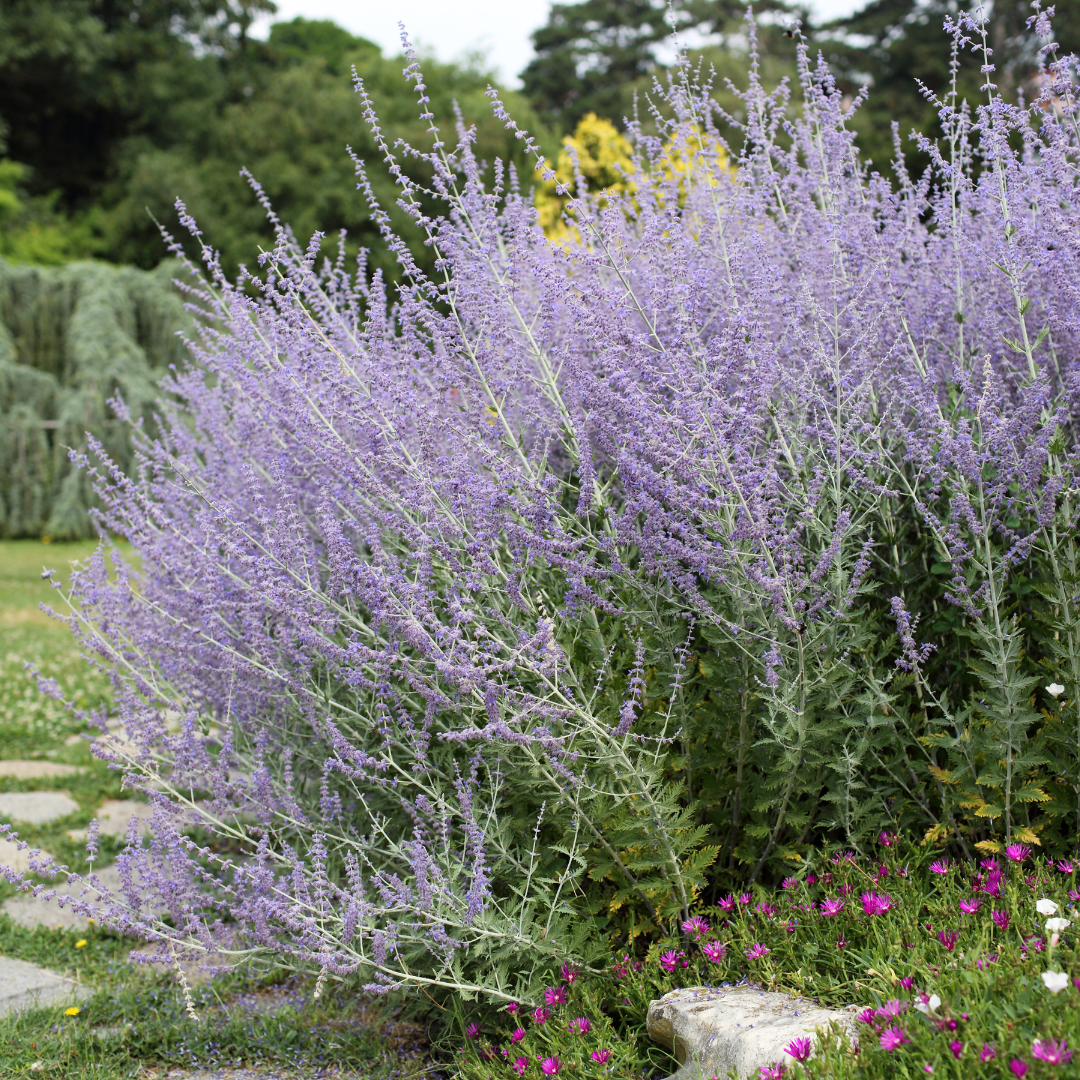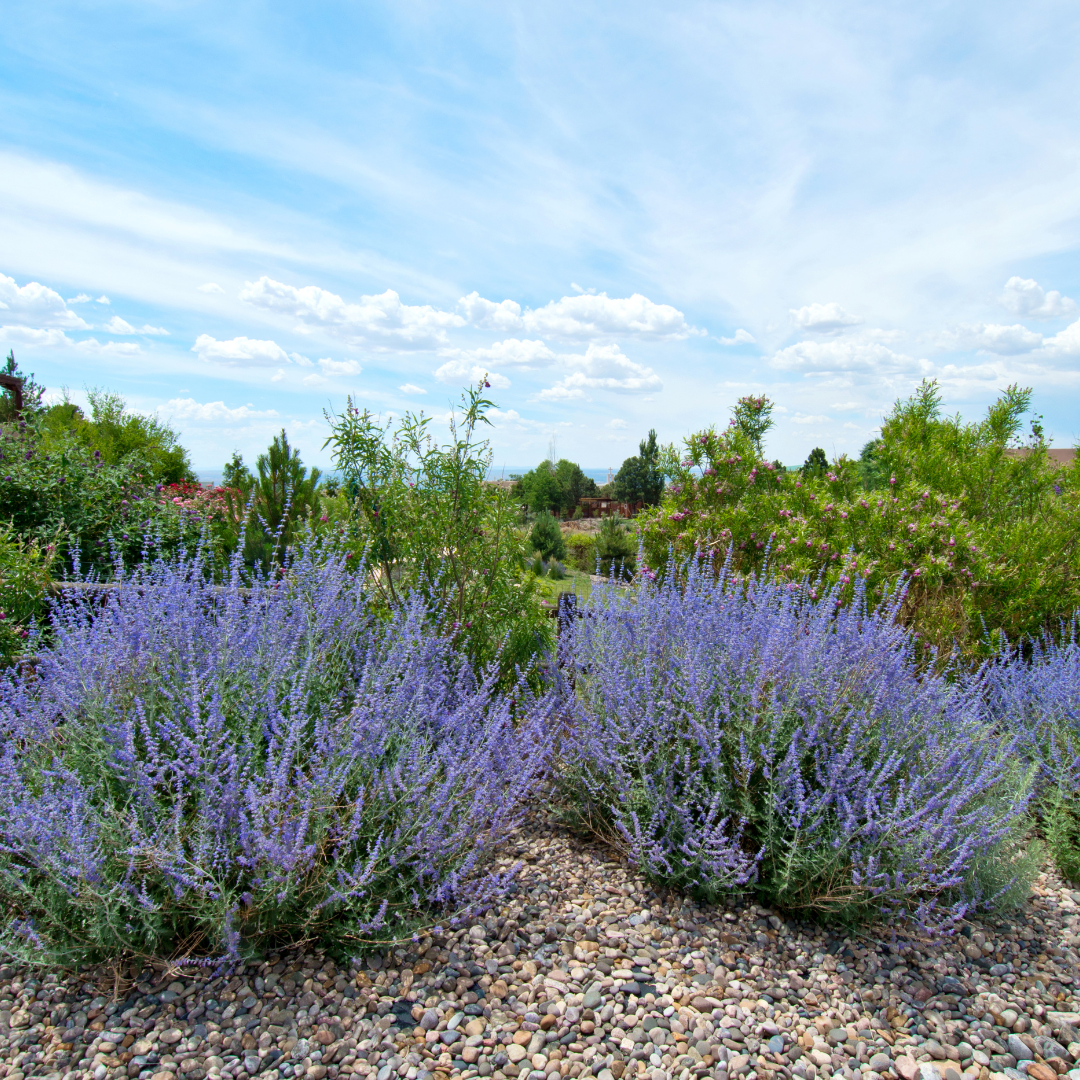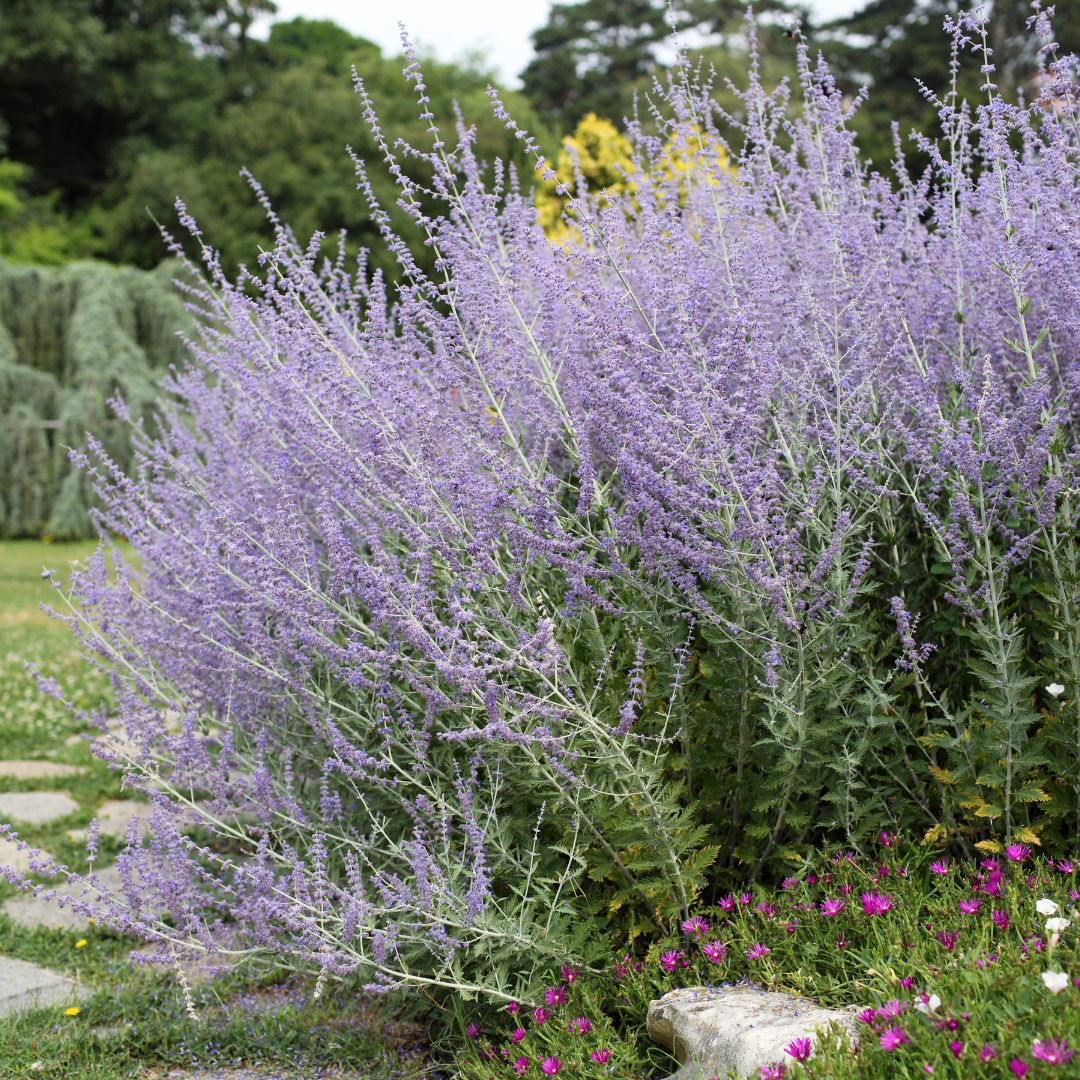My Store
Russian Sage
Russian Sage
Couldn't load pickup availability
Plant Type: perennial
Plant Height: 3-5 feet
Spread: 2-4 feet
Flower Color: lavender or bluish-purple
Sun Exposure: Full Sun
Russian Sage (Perovskia atriplicifolia) – Drought-Tolerant Beauty for Arizona Gardens
Enhance your Phoenix Valley landscape with Russian Sage, a hardy and resilient perennial shrub known for its tall spires of lavender flowers and aromatic, silvery foliage. Scientifically known as Perovskia atriplicifolia, this Central Asian native thrives in arid climates, making it a perfect choice for Arizona’s low-water landscapes. Russian Sage provides long-lasting color, height, and texture from midsummer to fall, attracting bees, butterflies, and other pollinators to your garden.
Key Features of Russian Sage
Russian Sage grows to a height of 3 to 5 feet, forming tall, airy spires of small, bluish-purple flowers that create a soft, misty effect in the landscape. Its finely textured, silvery-gray leaves release a fragrant aroma when touched, adding sensory appeal to garden spaces. The vibrant flower spikes and fragrant foliage make Russian Sage a standout addition to Arizona gardens, providing interest and color through the hot summer months and into fall.
Adapted to full sun, Russian Sage thrives in well-draining soil and is highly drought-tolerant once established, making it an ideal choice for Phoenix Valley’s dry climate. This perennial shrub requires minimal care and is deer-resistant, adding to its value for low-maintenance, wildlife-friendly landscapes.
A Water-Wise Choice for Phoenix Valley Gardens
Russian Sage’s drought tolerance and minimal water needs make it an excellent choice for Arizona’s water-conscious gardens. This hardy shrub provides striking color and texture with little irrigation, supporting sustainable gardening practices in the Phoenix Valley.
Versatile Uses for Russian Sage in Phoenix Valley Landscaping
-
Perennial Borders and Mass Plantings: Russian Sage’s tall flower spikes and soft color add height and texture to perennial borders and create a stunning effect when planted in masses.
-
Cottage Gardens and Xeriscapes: Adapted to dry, well-draining soils, Russian Sage is a natural choice for xeriscapes and cottage gardens, blending well with other drought-tolerant plants like lavender, salvia, and ornamental grasses.
-
Pollinator Gardens: The nectar-rich flowers attract bees, butterflies, and other pollinators, making Russian Sage a valuable addition to wildlife-friendly gardens.
-
Deer-Resistant Landscaping: With its aromatic foliage, Russian Sage is naturally deer-resistant, making it an ideal choice for gardens in areas with deer populations.
Care Tips for Growing Russian Sage in Phoenix Valley
Plant Russian Sage in a sunny location with well-draining soil to ensure healthy growth and abundant blooms. Water regularly during the first growing season to establish roots; afterward, it requires minimal supplemental watering. Russian Sage benefits from an annual pruning in early spring to encourage fresh growth and maintain its shape. Known for its resilience, this hardy perennial is a low-maintenance choice, perfect for busy gardeners seeking drought-tolerant plants with lasting beauty.
Why Russian Sage is Perfect for Arizona Landscapes
Russian Sage offers Phoenix Valley gardeners a vibrant, hardy shrub that provides long-lasting color, attracts pollinators, and thrives with minimal care in dry conditions. Its tolerance for drought, striking flower spikes, and low maintenance needs make it a versatile addition to perennial borders, xeriscapes, and pollinator gardens. Whether used as a focal point, in mass plantings, or for added height in mixed borders, Russian Sage combines beauty and resilience, enhancing Arizona gardens with its soft color and durability. For a sustainable, easy-care plant that thrives in warm climates, Russian Sage is an exceptional choice.
Three Timbers Installation Guide (Feel Free to Follow): Russian Sage
Planting Guide:
- Location: Full sun (at least 6 hours of direct sunlight for optimal growth and vibrant blooms)
- Soil: Well-drained, sandy or loamy soil (slightly acidic to neutral soil preferred)
- Spacing: Space plants 2-3 feet apart for optimal growth and air circulation
- Planting Depth: Plant at the same depth as the root ball, ensuring the top of the root ball is level with the surrounding soil surface
- Support: Russian Sage is a low-maintenance shrub that requires no staking and grows upright with silvery foliage and purple flowers
Watering Guide:
Watering After Planting:
- Initial Watering: Water thoroughly immediately after planting to saturate the root ball and surrounding soil
- Frequency: Water every 3-4 days for the first 2-3 weeks to help establish the root system
- Watering Amount: Provide 1-1.5 inches of water per session for deep watering
When is the Plant Established?
- Timeframe: Russian Sage is considered established after 2-3 months when the roots have spread into the surrounding soil
Watering Once Established:
- Summer: Water every 7-10 days during the hotter months. If temperatures exceed 100°F, increase watering to every 5-7 days. Provide 1.5-2 inches of water per session.
- Winter: Water every 3-4 weeks during the cooler months, depending on rainfall.
Drip Irrigation Setup:
- Placement of Emitters: Place the drip emitters 6-12 inches away from the base of the plant for even watering
- Flow Rate: Use emitters with a flow rate of 1-2 gallons per hour
- Number of Emitters: 1 emitter per plant for even watering distribution
- Adjusting Frequency: In summer, increase watering frequency to every 5-7 days. In winter, reduce to every 3-4 weeks
Share














